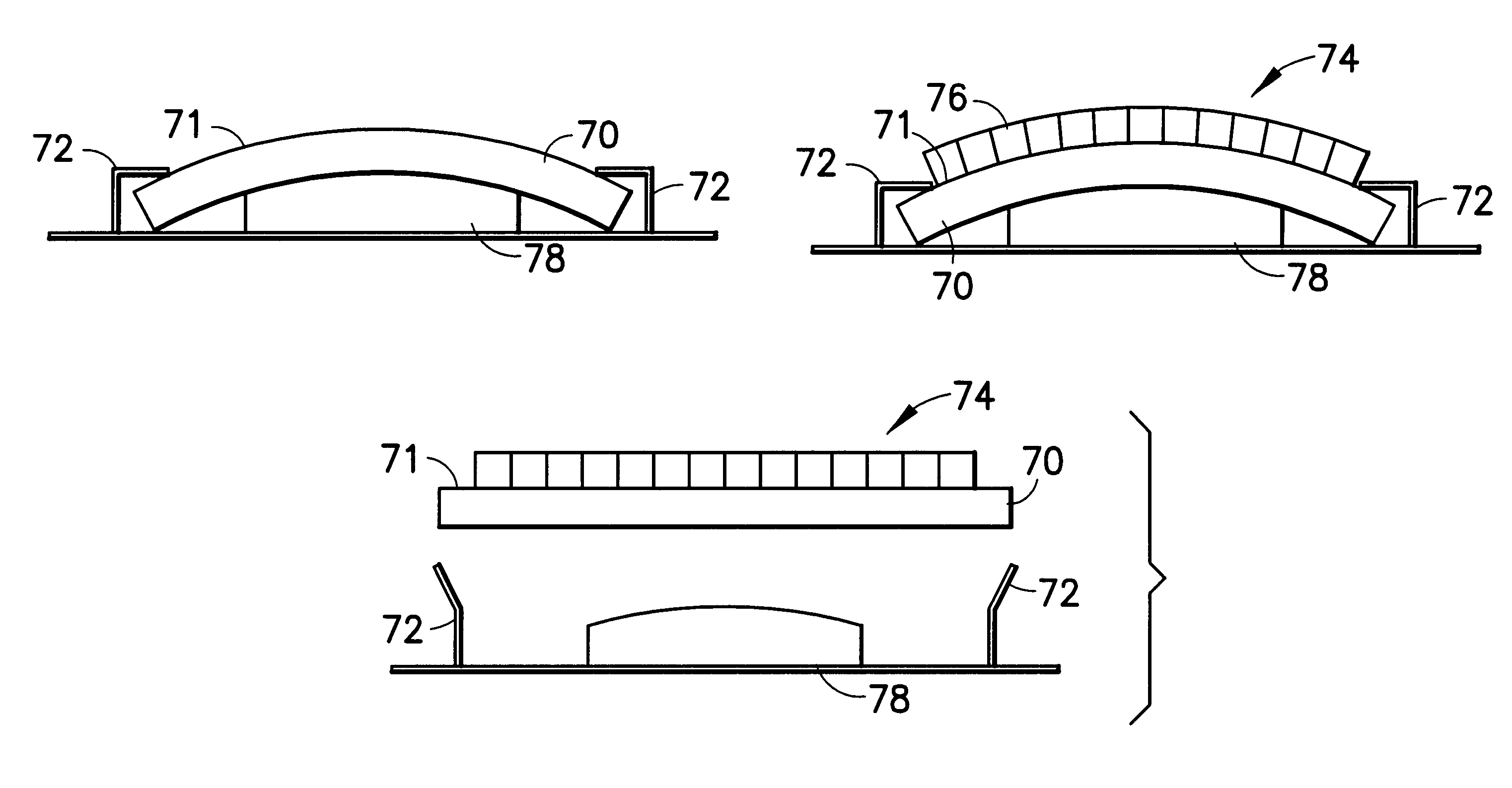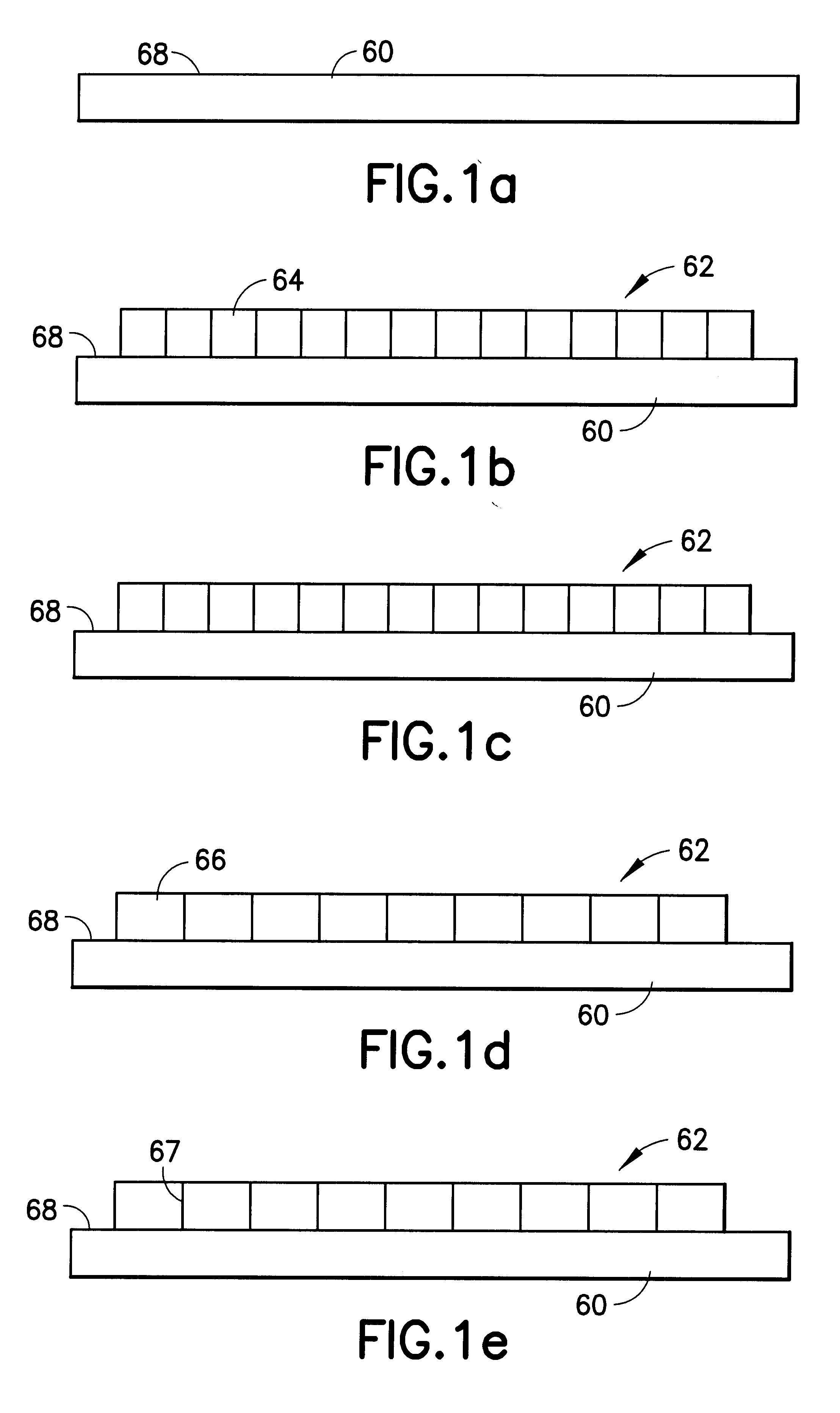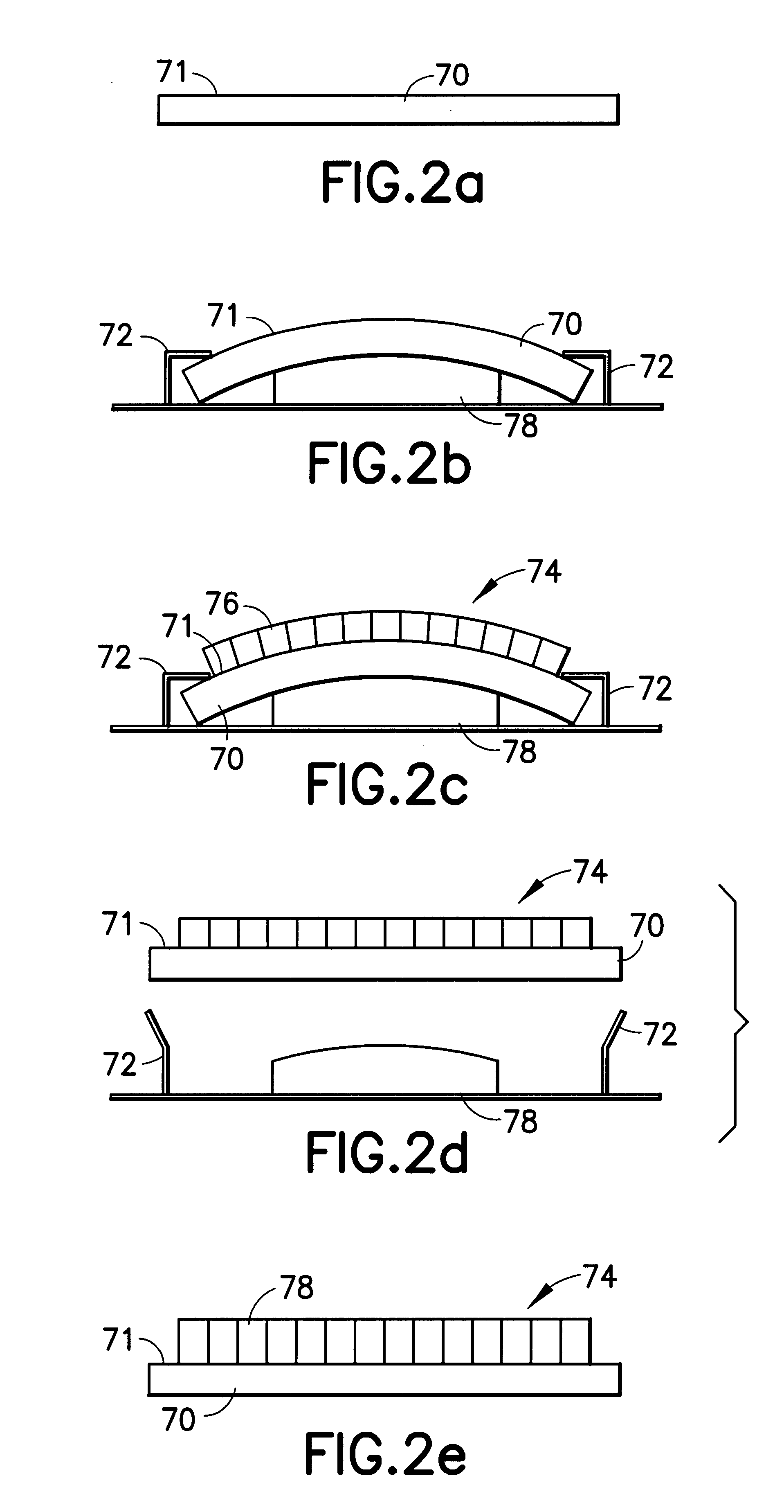Stress control of thin films by mechanical deformation of wafer substrate
a technology of stress control and wafer substrate, which is applied in the direction of vacuum evaporation coating, coating, sputtering coating, etc., can solve the problems of film deficient or even useless for its intended function, compromising the structural integrity of the material, and forming conditions that may be detrimental to other layers of the integrated circuit devi
- Summary
- Abstract
- Description
- Claims
- Application Information
AI Technical Summary
Benefits of technology
Problems solved by technology
Method used
Image
Examples
Embodiment Construction
The present invention is based on the discovery that the physical, electrical, and / or magnetic properties of a thin film material, wherein such properties are stress-dependent, may be significantly improved by selectively applying force to the substrate during the film formation and / or thereafter during the cooling of the film in the case of elevated temperature film formation, for the purpose of imposing, through the substrate, an applied force condition opposing the retention or generation of stress in the product film.
In general, the stress of a thin film material (wherein "thin film" refers to films having a thickness of less than about 2000 .mu.m) may be determined quantitatively by procedures comparing films prepared with and without the use of substrate curvature, or X-ray diffraction determination of the lattice parameter at different angles with respect to the film normal. Such analyses can provide a means for comparing each resulting film stress profile against the stress ...
PUM
| Property | Measurement | Unit |
|---|---|---|
| Curie transition temperature | aaaaa | aaaaa |
| Curie transition temperature | aaaaa | aaaaa |
| thickness | aaaaa | aaaaa |
Abstract
Description
Claims
Application Information
 Login to View More
Login to View More - R&D
- Intellectual Property
- Life Sciences
- Materials
- Tech Scout
- Unparalleled Data Quality
- Higher Quality Content
- 60% Fewer Hallucinations
Browse by: Latest US Patents, China's latest patents, Technical Efficacy Thesaurus, Application Domain, Technology Topic, Popular Technical Reports.
© 2025 PatSnap. All rights reserved.Legal|Privacy policy|Modern Slavery Act Transparency Statement|Sitemap|About US| Contact US: help@patsnap.com



